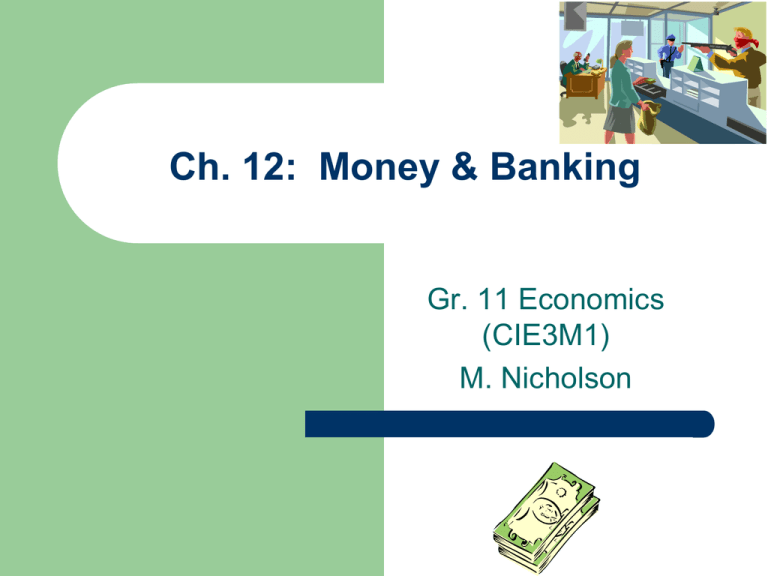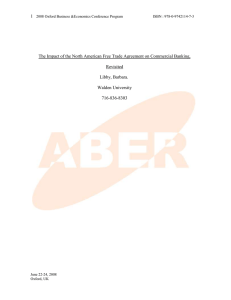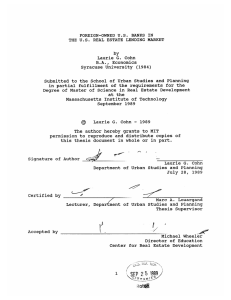Ch. 12: Money & Banking Ppt
advertisement

Ch. 12: Money & Banking Gr. 11 Economics (CIE3M1) M. Nicholson MONEY Money is anything that people are willing to accept as payment for goods & services In the past cows, stones, beads, beaver pelts and playing cards have functioned as money Canadian dollars are legal tender in Canada whereas credit cards and Canadian Tire bills do not have to be accepted as payment MONEY Cheque - order to pay an individual a specific amount of money from demand deposit or chequing account Money supply (M1) = Currency + Chequing MONEY BARTER One good or service must be exchanged for another good or service Problem of double coincidence of wants arises which wastes a lot of time Problem of indivisibility of bartered goods and services also arises Money solves both of these problems USES OF MONEY 1. 2. 3. 4. 5. Medium of exchange Generally acceptable Portable Divisible Unique Uniform in value – value evident USES OF MONEY Measure of Value – compare prices Store of Value – does not rot or spoil BANKING Chartered banks have a federal charter (e.g. Royal, CIBC, Montreal, TD Canada Trust, Nova Scotia) Schedule 1 banks are the five largest banks in Canada and have immense financial power with over 95% of M1 (most an individual can own is 10%) BANKING Schedule 2 banks are subsidiaries of foreign banks and have little impact on the Canadian economy Branch banking in Canada vs. unit banking in USA BANK OF CANADA Central bank of Canada founded in 1935 is now a Crown corporation The bank of the banks supplies Canada with currency Federal government uses B of C to manage its financial affairs (e.g. bonds) Main function is controlling the money supply to meet the needs of the Canadian economy OTHER FINANCIAL INSTITUTIONS Trust companies Mortgage companies Credit unions and caisses populaires MONEY CREATION loans by the banks of customer’s deposits creates money Cash-reserve requirements or fractional reserves determine how much the money supply can be increased based on the amount of the deposits The banks only need enough money for the daily needs of customers and can lend out the rest to earn interest and profits for the bank REGULATION OF THE MONEY SUPPLY Open market operations are the buying and selling of federal government bonds by B of C Expansion of the money supply B of C buys CSBs (Canada Savings Bonds) Contraction of the money supply B of C sells CSBs REGULATION OF THE MONEY SUPPLY REGULATION OF THE MONEY SUPPLY Changes in the bank rate or lending rate to banks influences the prime lending rate to the banks’ best customers Moral suasion used by the Gov. of the B of C (Poloz) to influence lending policies at banks







